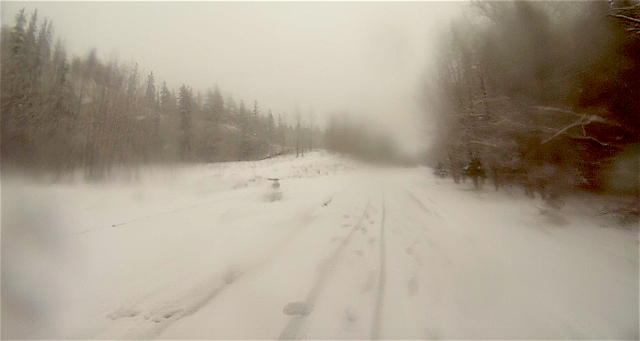Three Things from Edmonton podcast, episode 53: showing your route, showing your roots, mailing it in
Happy. End. Of. The. Week!
This is where once a week I try to remember three little things that made me happy or grateful and then record it in a short podcast. Here's Three Things, episode 53.
1. Showing your routes
I fight in myself the modern impulse to bail out of a newspaper story after the first 10 seconds of reading. I always feel I have something else to look at. I’m a child of print swimming in a visual mediascape designed to keep the attention of goldfish. I mean, look: A 30 second TV commercial for a home exercise machine has 18 cuts and all kinds of effects to keep my attention. Lack of attention is assumed by social media. A typical Twitter user takes about three seconds to decide whether a tweet is worth staying with. We scan, we swipe, we scroll, we, basically, confront written material like we are television viewers, trained to expect a new shot every second. Which is exactly how you don’t read a newspaper. Poor newspapers. All that non-moving black print on unchanging white paper, no sound effects, no clever use of blur in the foreground. But if I don’t work the muscles needed to sit still and read a newspaper story, then I seem to make the judgments and decisions of everyday life—they still have to be made—quicker and quicker, which, for me, isn’t always so salubrious. All of this to say thank you to newspaper reporters who get the space and make it difficult for readers to stop reading.
Here’s what I mean, The New York Times (paper edition, from Seattle) had a recent story about online traffic apps that had sent trusting California automobile drivers stuck in winter storm traffic onto dangerous and isolated detour routes. The story has 26 paragraphs. In paragraph 22, the reporter unexpectedly opened this wormhole into history.
The Donner Pass, named for the doomed snowbound pioneer family, some of whom resorted to cannibalism during the 1840s, is about 40 miles from the detour.
2. Showing your roots
Jared Quinney is an artist at the Nina Haggerty Centre for the Arts. He will tell you that painting or drawing takes time—time to draw or paint the complete picture. Jared’s commitment to the big picture is good news for his fans, of which I am one, who know they don’t see the big picture enough. Consider Jared’s trees. How he paints trees has changed the way I see trees. You see, Jared’s trees always show their roots. The trees that Jared paints on his canvases are rooted beings interested in staying in one place, staying put. Jared’s birch and poplar and elm trees are not ashamed to reveal their underground infrastructure. Me, I am stuck in second grade art class when it comes to seeing trees. I picture trunks and branches and leaves, but not, without Jared’s help, what lies beneath the surface. Which is what it is to be superficial.
Auntie Shelagh and I sent out a few notes last week the old-fashioned way, in envelopes dropped in a mailbox in Meadowlark. This is not the shortcut of email. The letters will take a couple of days to arrive. But there are some pluses. My experience is that hand-delivered envelopes are not left unopened for days, like some email. And the notes and cards inside are handwritten, not Arial or Helvetica. Handwritten notes flow in ink, via the hand and the arm, from the heart.









Comments
Post a Comment